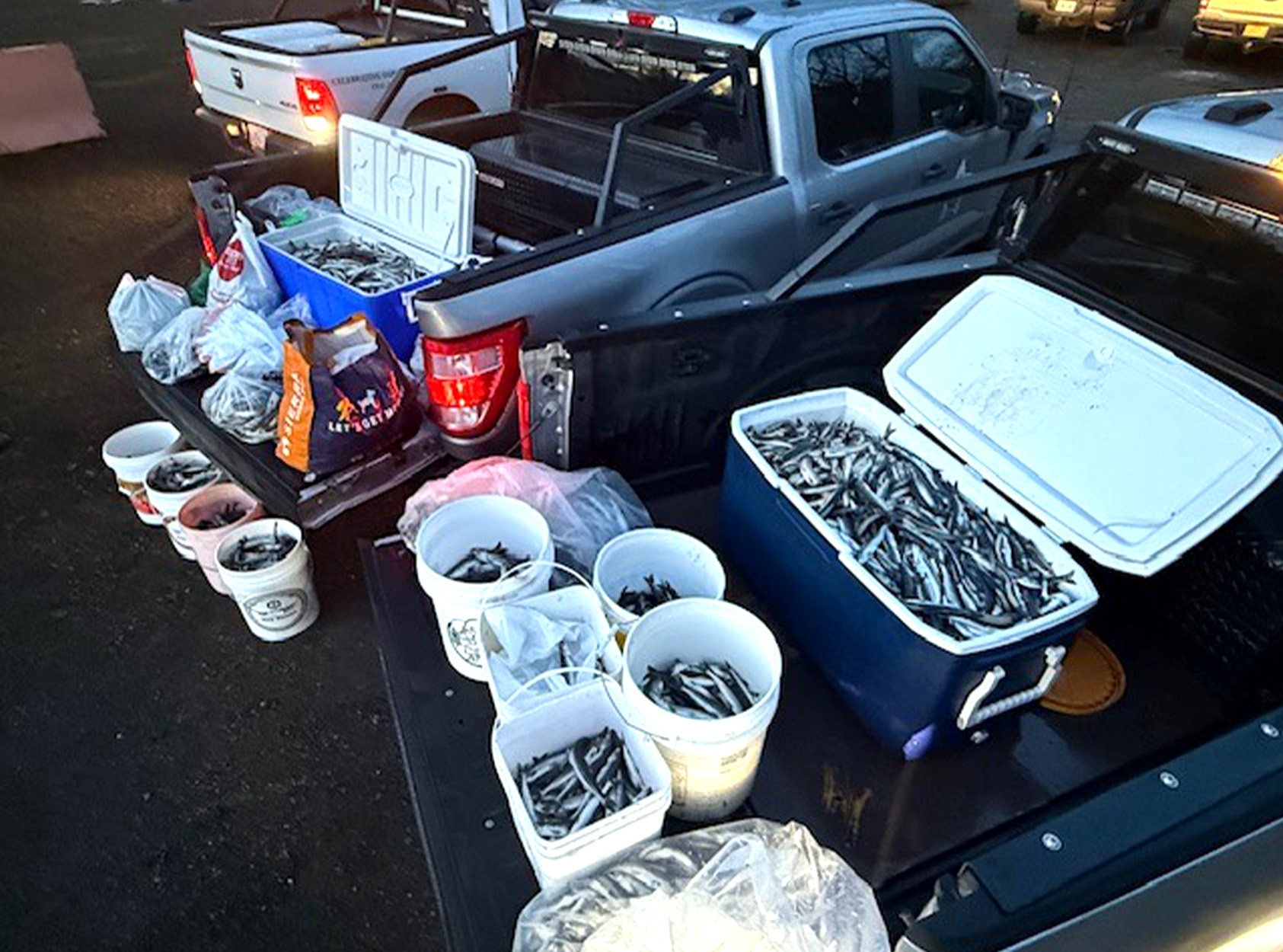A special 7-hour fishing season in Oregon brought chaos and a bit of lawlessness to the Sandy River on Thursday. As big pushes of tiny smelt worked their way upstream and into anglers’ dip nets, authorities stayed busy busting poachers. By the end of the 7-hour fishing window, officers with the Multnomah County Sheriff’s Office and the Oregon State Police had seized roughly 2,500 pounds of illegally-caught smelt, according to a statement by the MCSO.
Authorities explained that all licensed anglers harvesting smelt during the special season were allowed to take up to 10 pounds. Overharvesting was rampant, however. Photos from that day show buckets, trash bags, and coolers full of the dead, silvery fish, which are listed as threatened under the Endangered Species Act. The violators were all cited, and the confiscated fish were donated to the Confederated Tribes of Warm Springs.
The MCSO did not immediately respond to a request for comment, so it’s unclear how many violators were caught, or what citations they received. Judging by the sheer number of fish seized, there were most likely multiple parties or groups of poachers involved. Eulachon smelt only grow to about 6 to 9 inches with an average weight of .18 pounds, so 2,500 pounds of smelt would equal roughly 12,500 individual fish.
Read Next: Poachers Caught with 71 Fish Stuffed in Their Backpacks, Including Trophy Bass
A species native to the Pacific Northwest, eulachon smelt have a lot in common with Pacific salmon and steelhead. They rely on many of the same streams and habitats along the West Coast, and they’re anadromous, which means they spend the majority of their lives in the Pacific Ocean and then migrate up rivers to spawn and die. Because of this unique life history, they face many of the same threats that jeopardize salmon and steelhead runs today.
Also like their larger anadromous relatives, which hold immense cultural and religious importance to Native tribes in the Northwest, smelt have been a staple food source in the region for thousands of years. Tribes would use dip nets to catch large quantities of smelt, and they nicknamed them the “salvation” fish because they would show up in the wintertime, after all the other fish runs had fizzled out and food stocks were at their lowest.
“The return of spawning runs [of smelt] to coastal rivers meant the difference between life and salvation after a hard winter,” according to NOAA Fisheries.
Read Next: ‘I Slashed His Tires.’ Body Cam Footage Shows Game Warden Running Down Salmon Thieves Who Broke into a Hatchery
Oregon fisheries managers have tried to sustain this traditional and culturally significant fishery, even after smelt were listed as threatened under the ESA in 2010. This has led to closures most years, although recent upticks in smelt numbers have allowed for limited recreational harvests, like the 7-hour season that took place on the Sandy River in Troutdale on March 27.

This was only the fourth time in 15 years that the Sandy has been open to smelt harvest. Thousands of people lined the riverbanks with their dip nets, according to Oregon Public Broadcasting, just as native fishermen would have done thousands of years ago. Only these days, any fisherman can purchase a license and there are strict harvest rules to follow.
“Overharvesting has serious consequences,” the sheriff’s office wrote in the post. “Smelt are a crucial food source for many species and benefit the health of our entire river ecosystem … We’re committed to protecting these fish and ensuring sustainable populations.”
Read the full article here




